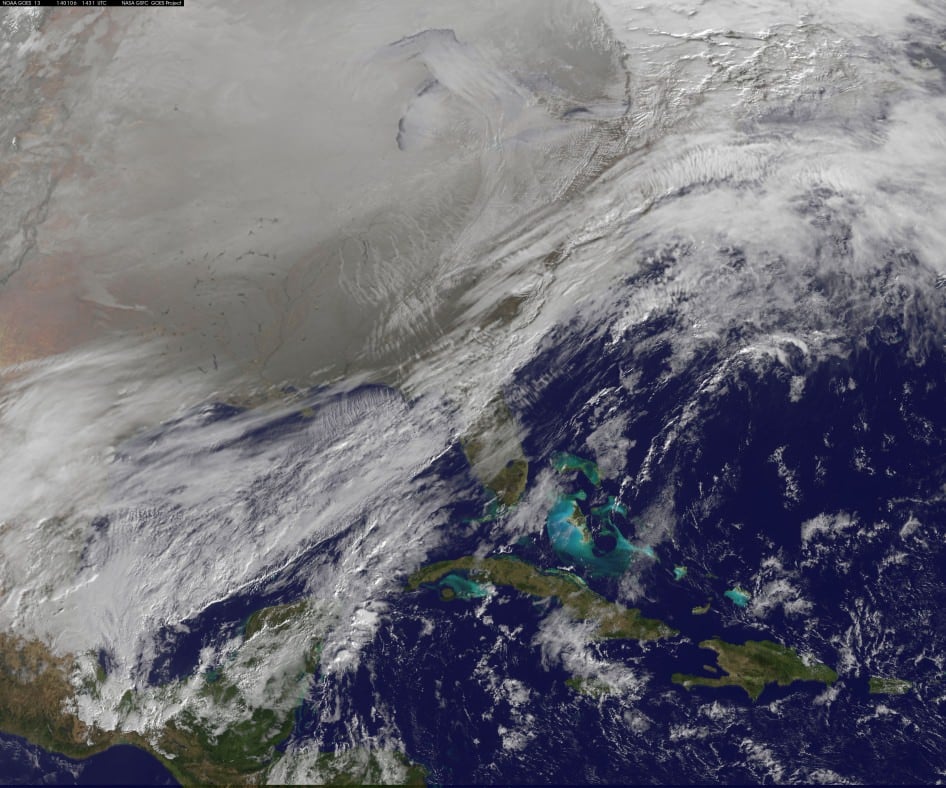If you live in the north and eastern part of the US, you're probably experiencing some frigid weather. You're probably also hearing people talk about something called a "polar vortex."
Just what is a polar vortex and why is it making the temperatures so cold?
This image was captured by NOAA's GOES-East satellite on Jan. 6, 2014, at 11:01 a.m. EST (1601 UTC). A frontal system that brought rain and snow to the US East coast is seen draped from north to south, and behind the front lies the clearer skies bitter cold air associated with the polar vortex. Also visible in the image is snow on the ground in Minnesota, Wisconsin, Illinois, Indiana, Ohio, Michigan, Iowa and Missouri. The clouds over Texas are associated with a low pressure system centered over western Oklahoma that is part of the cold front connected to the movement of the polar vortex.
NASA explains that the polar vortex is a "whirling and persistent large area of low pressure, found typically over both North and South poles."
Weather reports say the northern polar vortex was pushing southward over western Wisconsin and eastern Minnesota on Monday, Jan. 6, 2014, and was bringing frigid temperatures to half of the continental United States. It is expected to move northward back over Canada toward the end of the week.
More about the polar vortex:
Both the northern and southern polar vortexes are located in the middle and upper troposphere (lowest level of the atmosphere) and the stratosphere (next level up in the atmosphere). The polar vortex is a winter phenomenon. It develops and strengthens in its respective hemispheres' winters as the sun sets over the polar region and temperatures cool. They weaken in the summer. In the Northern Hemisphere, they circulate in a counterclockwise direction, so the vortex sitting over western Wisconsin is sweeping in cold Arctic air around it.
Source:
NASA
 Universe Today
Universe Today
